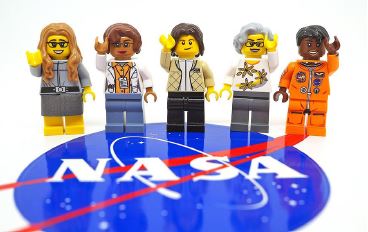
“Women are not good at science, engineering, and math.” As a woman, you’ve likely heard this at least once. These types of stereotypes pop up everywhere even in children’s magazine where girls are depicted in makeup and skirts, but males are featured as future scientists. You’ve also likely felt enraged at hearing and seeing the stereotypes, but these common stereotypes are deeply rooted in people’s mind. True or false, close or distant from the truth, all are deeply rooted in society. Why is this happening and how can we refute these stereotypes?

Do You Really Believe That?
Gender stereotypes are inappropriate ideas or comments made towards a specific gender. They can be divided into two large groups. The first is the bias people have towards specific gender’s characteristics. For instance, society urges women to show certain characteristics like being careful or modest. If a woman does not have these characteristics, she is seen as emotional and insensible. Women are also expected to adhere to traditional roles that society expects women to perform based on the characteristics, such as being a ‘good wife and wise mother’. The second type is related to women’s lack of certain abilities. For example, there is a belief that women are not good at science, technology, engineering, and mathematics, also known as STEM. The statement from Professor Alessandro Strumia that physics was “invented and built by men, it’s not by invitation” is typical example of this type of prejudice women face. The fact that the statement was made by the expert in the field highlights the bias in the field towards women.

Nobel Prize Winners of 2018 Strickland & Arnold
Among the two kinds of stereotype, society has begun to pay attention to the second type because of the Nobel Prize winner in 2018. In October, Donna Strickland, Associate Professor at the University of Waterloo, became the third woman to be awarded a Nobel Prize in Physics, and it was the first time in 55 years that a woman received the award. Even though she is one of the best physicists in the world and was awarded the Nobel Prize, she is an “associate” professor, and she didn’t even have her own Wikipedia page. Frances Arnold was also awarded the Prize for Chemistry this year, and she was the fifth woman to receive the prize. After the announcement, people started paying more attention to the fact that prize winners were women rather than focusing on their research because only 3% of Nobel Prize winners in science are women. Concerning both the case of female Nobel Prize winners and the statement from Strumia, there is clearly strong bias towards women and the idea of women’s inferiority in the STEM field, which make it difficult for women to achieve their goals in the STEM field.
Inconvenient Truths in STEM
The stereotype that women are not good at STEM is irrational, but it is deep-seated among people. There are mainly two reasons why people believe those stereotypes. First, media reinforces the stereotypes. David Uttal, a psychologist who studied ‘The Development of Children’s Gender-Science Stereotypes', found that as children grow older, their stereotypes tend to get reinforced, so he said that parents and teachers should show various examples of female and male scientists in science study, on television shows, and during unofficial conversation.1) However, unlike Uttal’s recommendation, the opposite is happening in Korea. The covers of children magazines are just one of many examples. Textbooks also contain many illustrative stereotypical images or comments about the intelligence of women. The Ministry of Gender Equality and Family held on online contest titled ‘Useful Gender Equality Textbook If Changed’. According to the result, people commented that they found traditional images of male teachers teaching science experiments while female teachers teaching cooking, music, and health care. Children are exposed to magazines and textbooks frequently. By depicting the biased image of females, it solidifies or even makes more stereotypes of males and females, and children internalize and believe that STEM fields belong to men.
Also, glass ceiling in STEM fields is main factor that has brought about the stereotypes. Besides Strickland, there are many cases of glass ceiling in the fields, and it also exists in Korea. According to the ‘Survey of Science and Engineering Personnel of Women in 2016’ by the Ministry of Science and ICT and the Korea Center for Women In Science, Engineering and Technology (WISET), the percentage of women in the field was 19.3%, and women holding higher positions in the field was 8.8%.2) Compared to the numbers of 2015, the number has increased slightly. The remaining percentage rests with males, highlighting the huge gap between men and women. The problem is that it makes it hard to find women role models in sciences for young people. People find role models who are experts in the field through the media, and well-known experts who appear on the media usually hold high positions in institutes where they engage in their own research and get support from the institute. With glass ceiling in the field, it is difficult for female scientists to fully achieve their full potential and become renowned persons. This fixes the stereotypes stronger and people continue to believe women are inferior in STEM fields.
Time for Fact Check
To break stereotypes related to women’s intelligence in STEM fields, it’s important to find evidence that refutes the stereotypes. Twenty years of studies by psychologists conclude there is no significant difference between men and women’s performances in STEM fields. A more recent study by Sara M. Lindberg and her colleagues in 2010 found that the difference between mathematics performance and gender was not significant enough to conclude that they are related after analyzing over 200 previous studies. The study did, however, show a small gap between the mathematics performances of genders, but the gap was smaller in countries that have more equality among the genders like Sweden and Iceland.3) This and other studies clearly reveal that the common notion that women are inferior in mathematics is untrue and that this common thought is nonsense. Differences in performance and ability in a specialty field are due to culture not gender. Therefore, research concludes that fields with greater gender equality in education show less differences in the performances of science and math among the genders.

Besides empirical studies, there are many great women experts in STEM fields proving that women’s inferiority in STEM fields is all illogical. Lise Meitner was the person who first found nuclear fission of uranium. Her achievement was hidden since the Nobel Prize for Chemistry went to Otto Hahn, coworker of Meitner, even though her contribution was as equally as important. Rosalind Franklin is also overlooked female scientist. Her X-ray image of DNA was the reason that James Watson and Francis Crick were able to find the structure of DNA. However, the Nobel Prize went to Watson and Crick. Both Meitner and Franklin played main role in scientific findings, but they are overlooked compared to the male scientists. Comparing the number of women experts in STEM fields to the number of men from the past until present, the former is smaller because only men were educated in the past. Women were forbidden to enter STEM fields or enter labs to work. Despite difficulties encountered during their studies and research work, women scientists tried to continue in the field and gave up the forefront to remain in the background. In other words, the claim that women are not able to achieve in STEM areas is not true.

We Are All Equal in STEM
Do you still believe this nonsense? “You are not good at STEM because you’re woman”? If you change the word ‘woman’ to ‘human’, you’ll notice how insane and irrational this word is. We live in a world of gender stereotypes. However, people are breaking these stereotypes little by little by gaining knowledge through studies that contradict stereotypes or by having role models in the fields. You too can be good at science, technology, engineering, and mathematics. Gender has nothing to do with one’s ability in the STEM fields, and we are all equal in STEM field as human.
1) Shim Jaeyul, “’Draw a Scientist’ What Are the Responses of Children?”, ScienceTimes, March 27,
2018
2) Shin Seonmi, ““STEM Field Is Full of Glass Ceiling”… Insignificant Percentage of Women Employment and Promotion”, Yonhap News, December 10, 2017
3) Sara M. Lindberg and Others, “New Trends in Gender and Mathematics Performance: A Meta-Analysis”, Psychological Bulletin 136(6), 2010


